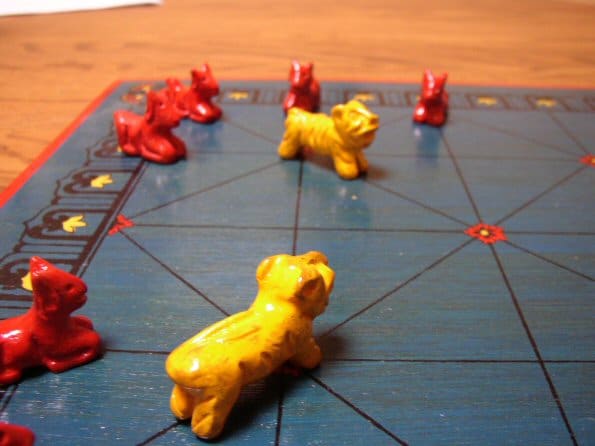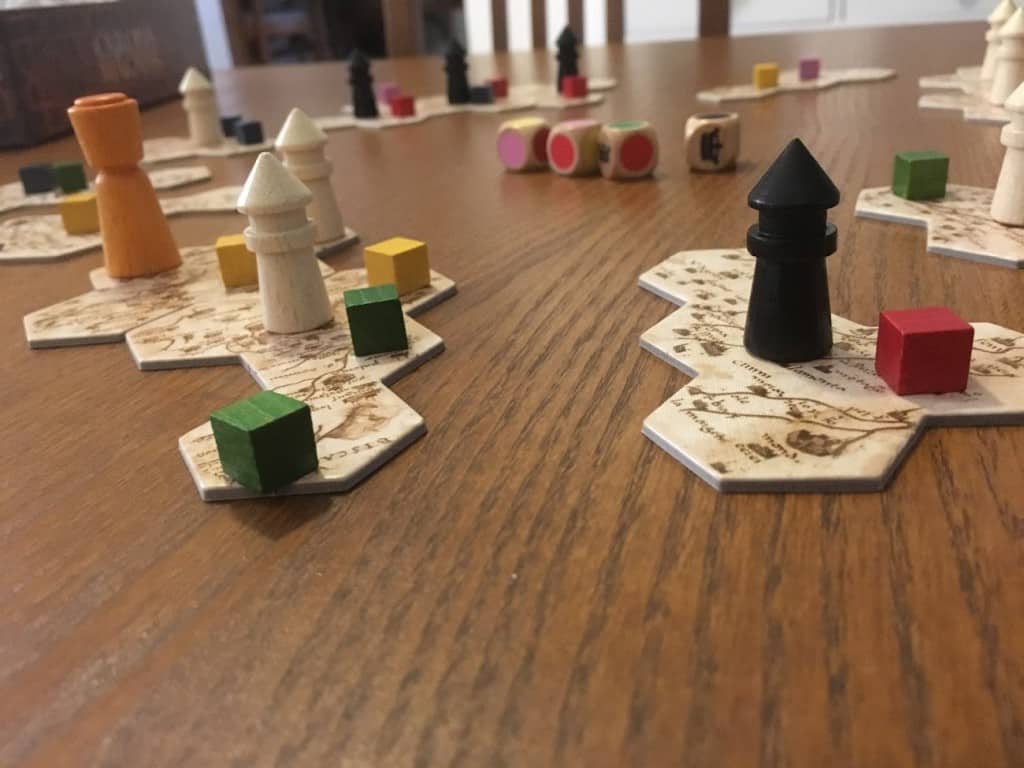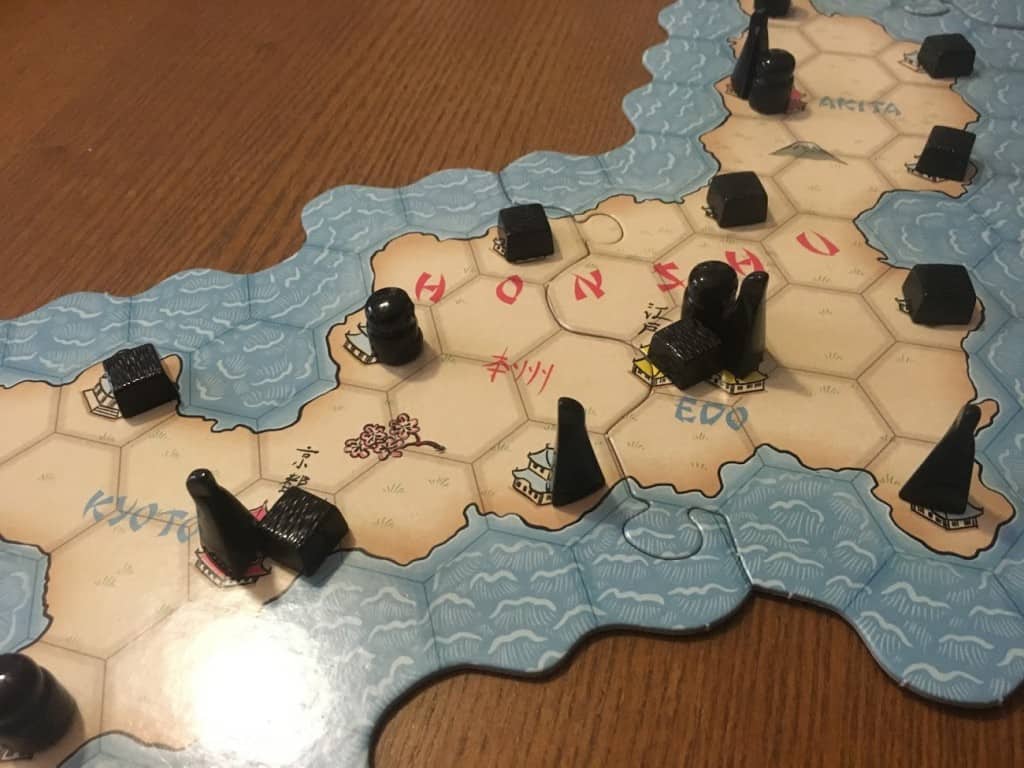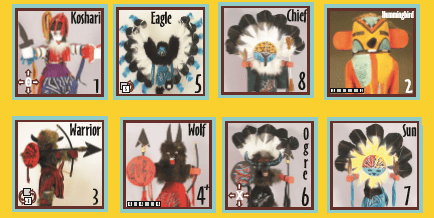
Ok, I must confess I love to buy games. I especially enjoy buying the unexpected game in the unexpected place. Almost twenty years ago, I was perusing a global arts and crafts store on the Sonoma Square in Sonoma, California, when I stumbled upon this game, Bagh Chal:

I was immediately transfixed by the beautiful handmade board and animal figurines. It turns out Bagh Chal is the national game of Nepal. The game is for 2 players; 1 side is the 20 goats and 1 side is the 4 tigers. Game play is reminiscent of Checkers, but with an interesting asymmetrical twist. The goat player is trying to hem in all the tigers so that they can’t jump over any goats while the tiger player is trying to eat at least 5 goats. Needless to say, I bought the game.
Since buying Bagh Chal, I have often set up the game before a party and then watched as guests approached the game curiously. Eventually, someone might say “What is that?” and then I would teach them to play.
THINK OF MY LIVING ROOM AS A MUSEUM FOR GAMES.
On another occasion, I was in London for business, but I found time to visit the British Museum, which is home to an amazing amount of artifacts from around the world. In the gift shop, the museum proudly presents Ur, a game literally discovered by archaeologists in a Mesopotamian tomb. Figuring out the rules to some lost game sounds like a fun research project—imagine if they had found Catan in a tomb. Again, I bought the game based on the archaeology angle alone.

Ur feels like a cross between Mancala and Backgammon. 2 players are competing to move all of their pieces along a route to an end spot first. Players roll 4-sided dice in order to move and can earn extra turns by landing onto certain board spots, or they can bounce the other player’s pieces off the board by landing on them. It’s a beautiful, cutthroat game.
WHAT IS IT ABOUT THESE “MUSEUM” GAMES THAT I FIND SO ATTRACTIVE?
I think it’s a few things: Eye appeal, Minimal components, Minimal rules, Surprising mechanics, and Thematic resonance.
- Eye appeal: There’s no denying that Bagh Chal looks amazing with the pieces all set up. It’s hard not to grab a tiger or goat figurine. The presentation of Ur is not as striking, but the board itself is a reproduction of a physical carved board. Just the thought of playing a game on such an intricate board makes me smile. I’m awed at the amount of effort ancient people put into creating a board game.
- Minimal Components: In an era of bags of cubes and mountains of cardboard, it’s refreshing to see games that involve such few components. Yeah, a board and 24 figurines is all you need. Yeah, a board, 4 dice and 14 pawns is all you need. It feels more relaxing to be sitting a table with so few components.
- Minimal Rules: The rules for Bagh Chal are printed on the back of the board. Yes, that’s right, all of the rules fit on the back of the board. Imagine if that were true for modern games. The rules for UR are also very easy. (The box does contain “advanced rules” with some advanced tokens, but the main game is quite simple.) Playing these games make you wonder why do modern games have to have so many rules?
- Surprising Mechanics: Despite the last two points, these games still contain surprises in their mechanics. Bagh Chal begins with the tigers on the board, but the goat player has to place their goat pieces on the board, one by one. This “setup” phase is tense and unexpected. I can’t think of a parallel in another game. In Ur, the central path of the board is shared by both players, a kill zone if you will. Leaving any of your pieces on any of those spots is just asking for trouble, but this central path is long and difficult to traverse in one turn, so players have to take risks eventually. It’s delicious tension.
- Thematic Resonance: There’s something very pleasing about the idea of 20 goats working together to subdue 4 tigers. It feels almost metaphorical, like the weak banding together to topple the powerful. And if you are the tiger, every goat you eat feeds your confidence that you can overcome the power of the crowd. For UR, traversing the board feels like the journey of one clan over clan. What awaits each clan when they exit the board: Enlightenment? Success? Everlasting Joy? If only other people wouldn’t get in the way, the path would be so much easier.
There are a few modern games that evoke the appeal of a “museum” game for me.
First, Carolus Magnus. I love the look of this game on the table: the castles look like chess pieces, the territory tiles look like pieces of an old map. As you play the game, these territory tiles fuse together creating larger and larger domains. But even the larger territories can change hands quickly. It’s true the game comes with a giant bag of cubes and a very modern turn order mechanism, but overall, it’s a very tight, very vicious game that evokes games from an earlier era.

Second, Samurai. Let’s start with the stunning Japan-shaped board with three interesting shaped tokens on it (the Buddha, the rice paddy and the high hat). The clever area-control mechanics really bring out the theme, gain as much influence as you can with as little effort so you can exert your influence elsewhere too. The scoring mechanism might seem a bit wonky at first, but the scoring mechanism does enforce a sense of balance in your play. You must accumulate the most of one type of token in order to have a chance to win, but after that it’s based on how many other tokens you accumulated of the other types. It’s mind-bendingly good.

Even my first published game, Kachina, was originally imagined as a bit of a “museum” game. The tag line for the game reads:
In the mythology of the Hopi Native American tribe, the world is ruled by kachinas (or spirits) of many different types. Children of the tribe learn about these different spirits through the use of kachina dolls. To illustrate the tension of different spirits in the world, the tribe elders created this game of kachinas vying for dominance.

Of course, this is complete fabrication on my part. My game was never created by the tribal elders of the Hopi tribe to teach the children anything, but I loved the idea that maybe, just maybe such a game could exist. What would it look like? How would it play? Kachina contains just 60 tiles of 8 types. Originally, I imagined the tiles might look like photographs of Kachina dolls. As the players played tiles to the board, I loved the idea that an implicit story was being created, how different kachinas gained and lost dominance. Every board seemed to develop its own challenges, a wall of Ogres or a pesky Clown tile mocking your moves. Even though my game will never be in a museum, I can only imagine if I had found a game like Kachina in some local arts and craft store, a leather draw bag full of elaborate tiles showing spirit faces. I probably would have bought that game too.








